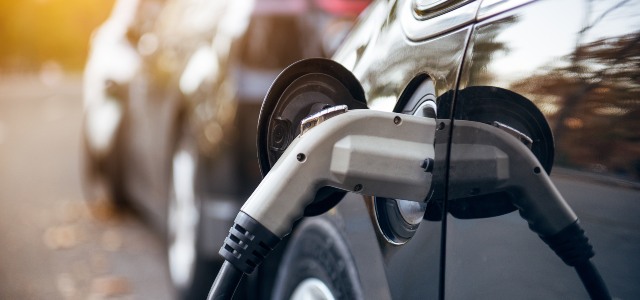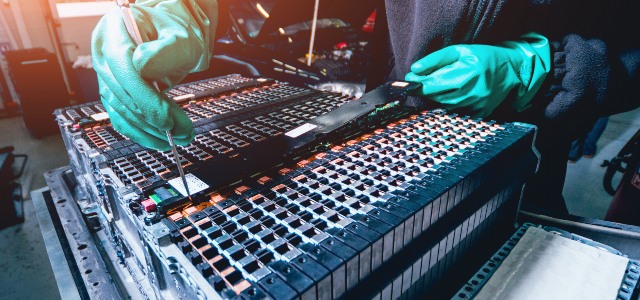
The ‘current challenges’ with scrapping electric cars
20th May, 2020
After the Covid-19 outbreak rocked the early months of 2020, there are already growing calls for public and government attention to other global threats – the biggest of which, of course, is climate change. It’s likely that environmental concerns are going to be pushed ever further up the global agenda in the coming years. One of the biggest areas for improvement is obviously transportation, and there’s likely to be even more heavy investment in electric cars.
Right now though, there are still some difficulties involved in recycling them – with most of those difficulties centred on the lithium ion battery. So, if you own an electric vehicle, what are the challenges that the industry currently faces when it comes to scrap your car?
Removing the battery
Normally, it’s pretty easy to get the batteries out of small devices like a torch, or a remote control (even easier if you’ve got access to a screwdriver, or particularly sharp fingernails). Unfortunately when it comes to electric cars, things are a little more complicated. First of all, there’s the obvious – namely, the risk of electrocution. Workers have to contend with the potential for leftover energy reserves still stored in the battery, which can open them up to the risk of electrocution – possibly fatally so.

Plus, right now the batteries in electric vehicles aren’t designed for easy removal, with incredibly strong sealants and adhesives making them tricky to prise out of their cavities. Once they have finally been removed from the car, the sheer mass of the battery means that it’s hard to move unless you’ve got the right equipment to do so, and as an extra fun bonus, it can also pose the risk of respiratory issues as it contains (highly reactive) hydrogen fluoride.
Of course, a couple of these problems could be solved with the very same solution that we’ve been using for lots of problems within the industry for a long time now. That’s right – robots. But the trouble with creating an automated disassembly line is that lithium ion batteries aren’t made to a standardised template, and all the little differences between each one makes it difficult for robots to handle the job. For now, it’ll have to be very skilled (and very careful) humans.
Storage and disposal
OK, so with some savvy expertise and specialised equipment, finally the battery is out of the car. But then you’ve got the problem of how to store it. At the time of writing there’s no specific guidance for the storage and disposal of lithium ion batteries, besides that all the normal health and safety rules apply, and their storage must be organised and overseen by a suitably qualified person. No prizes for guessing why – you’ve seen the safety labels for batteries in almost any other product.
Lithium ion batteries can pose a serious fire or explosive hazard if they’re stored improperly, and we’ve already explained in detail about the kind of dangers posed by fires in scrapyards. Plus, a fire that involves batteries will qualify as a metal fire, which are even harder to deal with than those involving wood. For these reasons alone, even if scrapyards have a qualified expert on the case, they’ll still be trying to avoid stockpiling too many at once on their premises, just in case disaster strikes.
But if too many lithium ion batteries end up in landfills, the same dangers still apply. What’s more, they’re at risk of undergoing a process called thermal runaway. One potential consequence of that is a raging fire, which the other one is a straight-up explosion. (The same is true of smaller batteries by the way, which is why you’re not allowed to take spare AAs on aeroplanes.) These explosions are not just dangerous in themselves, but they can also release highly toxic gases which can be a serious threat to environmental and human health.
Repurposing and recycling
So, fires and explosions and toxic gases. All not terribly cheery prospects, which is why the main focus of the industry in the near future is probably going to revolve around recycling and repurposing. Recycling in itself is also an unpleasant job at the moment, and reclaiming useful components and materials from lithium batteries remains an extremely tedious and risky job. Humans will need to get better at it though, because it helps recover thousands of tonnes of valuable metals like nickel, cobalt and silver. By recycling these, we can help reduce the need to mine new materials, cutting CO2 emissions and taking the edge off the environmental (and in many places, the human) cost involved in mining.
While we improve our recycling rate, repurposing the batteries in their entirety is likely to be a key priority too. Toyota, one of the global pioneers of electric vehicles, has already found a novel way to repurpose its used vehicle batteries – it’s paired them with solar panels to power selected shops in Japan. Sounds unlikely at first, but the average used car battery can typically hold and discharge 80% of the power it did when it was brand new – so suddenly it doesn’t sound like a terribly far-fetched scenario!
With all this in mind, it’s easy to see why “designing for recycling” is something that battery manufacturers are increasingly being called upon to do. This is largely because facilitating the recycling process first involves tackling those earlier problems we mentioned with disassembly. Once more, that brings us back onto the need for standardised batteries. And let’s not forget that designing for recycling has the potential to help us get purer – and therefore more useful and valuable – materials from the batteries.
In case you’re wondering, to us it doesn’t matter what car you drive – we’ll help you scrap it all the same! It’s never been easier to get the job done. All you need to do is enter a few details into our homepage, and we’ll provide you with an instant online quote then and there. Curious to find out how much your car is worth?